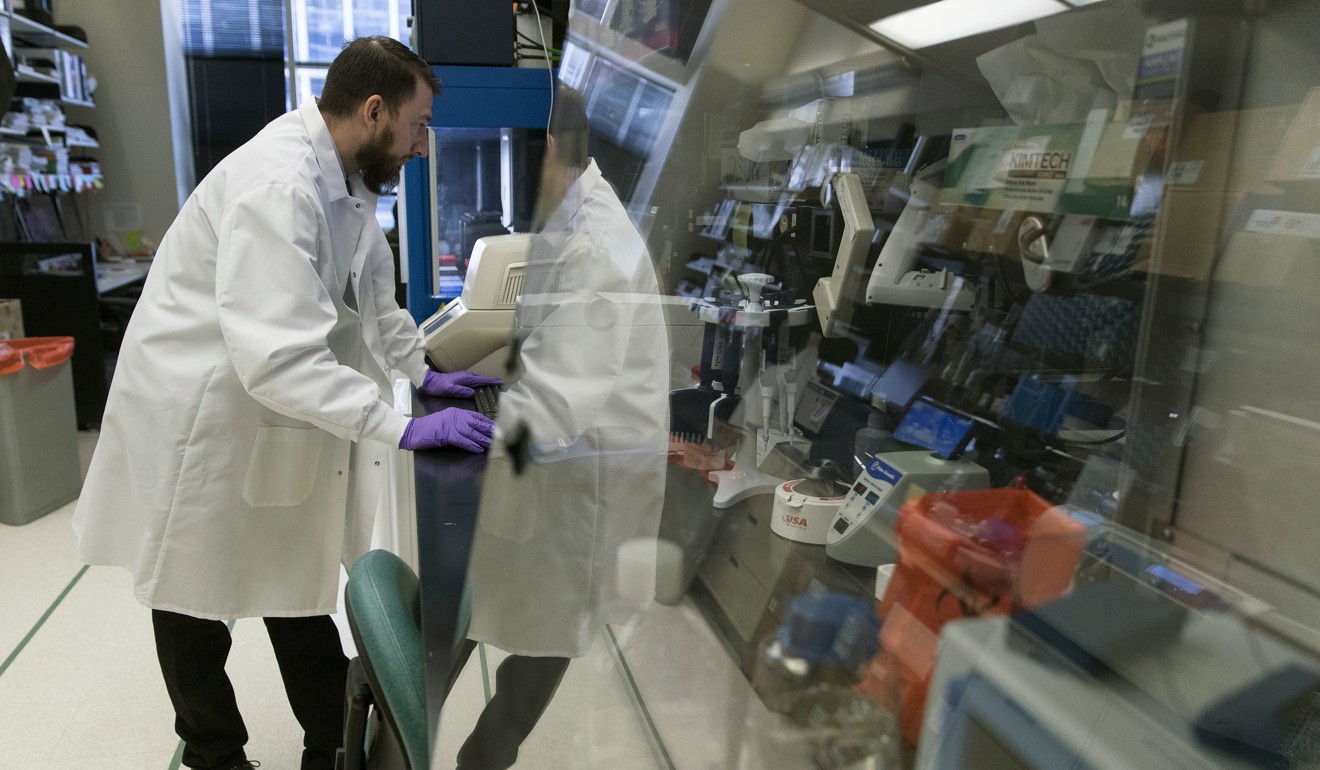
On centenary of pandemic, scientists close in on flu ‘super shot’ to ward off all strains
The descriptions are haunting.
Some victims felt fine in the morning and were dead by night. Faces turned blue as patients coughed up blood. Stacked bodies outnumbered coffins.
A century after one of history’s most catastrophic disease outbreaks, scientists are rethinking how to guard against another super-flu like the 1918 influenza that killed tens of millions as it swept the globe.
There’s no way to predict what strain of the shape-shifting flu virus could trigger another pandemic or, given modern medical tools, how bad it might be.
But researchers hope they’re finally closing in on stronger flu shots, ways to boost much-needed protection against ordinary winter influenza and guard against future pandemics at the same time.

Labs around the US are hunting for a super-shot that could eliminate the annual autumn vaccination in favour of one every five years or 10 years, or maybe, eventually, a childhood immunisation that could last for life.
Fauci is designating a universal flu vaccine a top priority for NIH’s National Institute of Allergy and Infectious Diseases. Last summer, he brought together more than 150 leading researchers to map a path. A few attempts are entering first-stage human safety testing.
Still, it’s a tall order. Despite 100 years of science, the flu virus too often beats our best defences because it constantly mutates.

“We’ve made some serious inroads into understanding how we can better protect ourselves. Now we have to put that into fruition,” said well-known flu biologist Ian Wilson of The Scripps Research Institute in La Jolla, California.
The sombre centennial highlights the need.
Back then, there was no flu vaccine – it wouldn’t arrive for decades. Today vaccination is the best protection, and Fauci never skips his. But at best, the seasonal vaccine is 60 per cent effective.
The new vaccine quest starts with two proteins, hemagglutinin and neuraminidase, that coat flu’s surface. The “H” allows flu to latch onto respiratory cells and infect them. Afterward, the “N” helps the virus spread.
They also form the names of influenza A viruses, the most dangerous flu family. With 18 hemagglutinin varieties and 11 types of neuraminidase – most carried by birds – there are lots of potential combinations. That virulent 1918 virus was the H1N1 subtype; milder H1N1 strains still circulate. This winter H3N2, a descendant of the 1968 pandemic, is causing most of the misery.
Think of hemagglutinin as a miniature broccoli stalk. Its flowerlike head attracts the immune system, which produces infection-blocking antibodies if the top is similar enough to a previous infection or that year’s vaccination.
But that head also is where mutations pile up.
A turning point toward better vaccines was a 2009 discovery that, sometimes, people make a small number of antibodies that instead target spots on the hemagglutinin stem that don’t mutate. Even better, “these antibodies were much broader than anything we’ve seen,” capable of blocking multiple subtypes of flu, said Scripps’ Wilson.
Scientists are trying different tricks to spur production of those antibodies.
In a lab at NIH’s Vaccine Research Center, “we think taking the head off will solve the problem,” Graham said. His team brews vaccine from the stems and attaches them to ball-shaped nanoparticles easily spotted by the immune system.
In New York, pioneering flu microbiologist Peter Palese at Mount Sinai’s Icahn School of Medicine uses “chimeric” viruses – the hemagglutinin head comes from bird flu, the stem from common human flu viruses – to redirect the immune system.
“We have made the head so that the immune system really doesn’t recognise it,” Palese explained. GlaxoSmithKline and the Gates Foundation are funding initial safety tests.
In addition to working with Janssen Pharmaceuticals on a stem vaccine, Wilson’s team also is exploring how to turn flu-fighting antibodies into an oral drug.
Yet lingering mysteries hamper the research.
Still, no one knows the ultimate origin of that terrifying 1918 flu. But key to its lethality was birdlike hemagglutinin.
That Chinese H7N9 bird flu “worries me a lot,” Taubenberger said. “For a virus like influenza that is a master at adapting and mutating and evolving to meet new circumstances, it’s crucially important to understand how these processes occur in nature. How does an avian virus become adapted to a mammal?”
While scientists hunt those answers, “it’s folly to predict” what a next pandemic might bring, Fauci said. “We just need to be prepared.”

